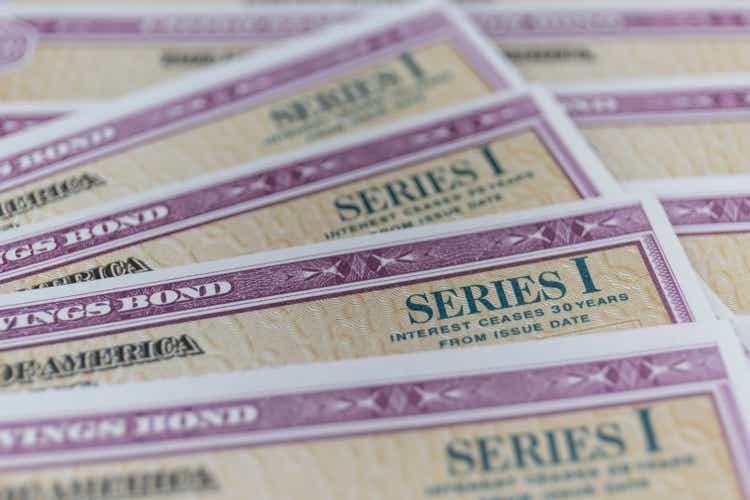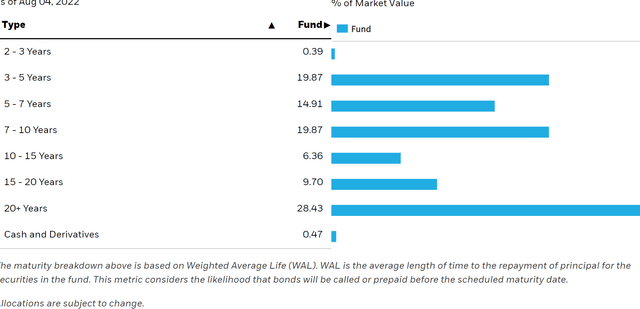jetcityimage
The matter of the iShares iBoxx $ Investment Grade Corporate Bond ETF (NYSEARCA:LQD) is fairly straightforward. It is an ETF that is invested in longer-term bonds, mostly fixed interest, in an environment where rates are increasing. The bonds really have duration working against them especially as unemployment shockingly grows. This is not the right stock to have right now if the Fed is serious about tackling inflation.
Reminder of Duration
The concept of duration is central to finance. Duration is the effective maturity of the bond, which means that it is weighted to something less than the period of the final payment of the bond because some of the value of the bond, often coming from coupons, occurs earlier within a bond’s life. If a bond has a longer effective maturity at a fixed interest, it means that investors are committed to an interest rate for longer that was once market, and if rates rise as they are now, you will be committed longer to an uneconomical rate. Simply, longer duration bonds decline more dramatically in value as rates rise.
Breakdown of LQD
There isn’t anything too concerning with the credit quality of LQD, at least on first look. The problem is all in the duration of the bonds. The life of the bonds are generally pretty long, with the average maturity being between 7 and 10 years, and effective maturity likely being a little less than that due to coupons.
The issue is that while it seemed previously that rate hikes might slow down after the second 75 bps increase, unemployment actually continues to be low, in fact it decreased despite the rate hikes. We are now back to a Phillips Curve world where if unemployment is low inflation should be higher. Yes, consumer spending has taken a dive, but if unemployment is so low that might reverse soon unless the Fed, still committed to driving down inflation, continues in its anti-inflation crusade. They may or may not, but they said they would and they have to raise rates to do it apparently given the unemployment data. More banks are following in the Fed’s footsteps now with the BOE raising rates and giving gloomy recession forecasts. LQD has declined 12% YTD but with relatively high duration bonds, mostly fixed rate, things could still get a lot worse.
Conclusions
The yield is even quite appealing at 4.4%, and the fee is less than 0.2%, but ultimately value is value. High duration bonds carried by LQD are simply wrong for the current environment, and that 4.2% net yield is not good at an A credit rating when the risk-free rate is 3% or higher. That’s a risk premium that might be even less than 1%. Pretty uninteresting compensation for risk. We’d rather have the flex against inflation or higher rates that other equity based investments have to offer.
While we don’t often do macroeconomic opinions, we do occasionally on our marketplace service here on Seeking Alpha, The Value Lab. We focus on long-only value ideas, where we try to find international mispriced equities and target a portfolio yield of about 4%. We’ve done really well for ourselves over the last 5 years, but it took getting our hands dirty in international markets. If you are a value-investor, serious about protecting your wealth, us at the Value Lab might be of inspiration. Give our no-strings-attached free trial a try to see if it’s for you.




Be the first to comment